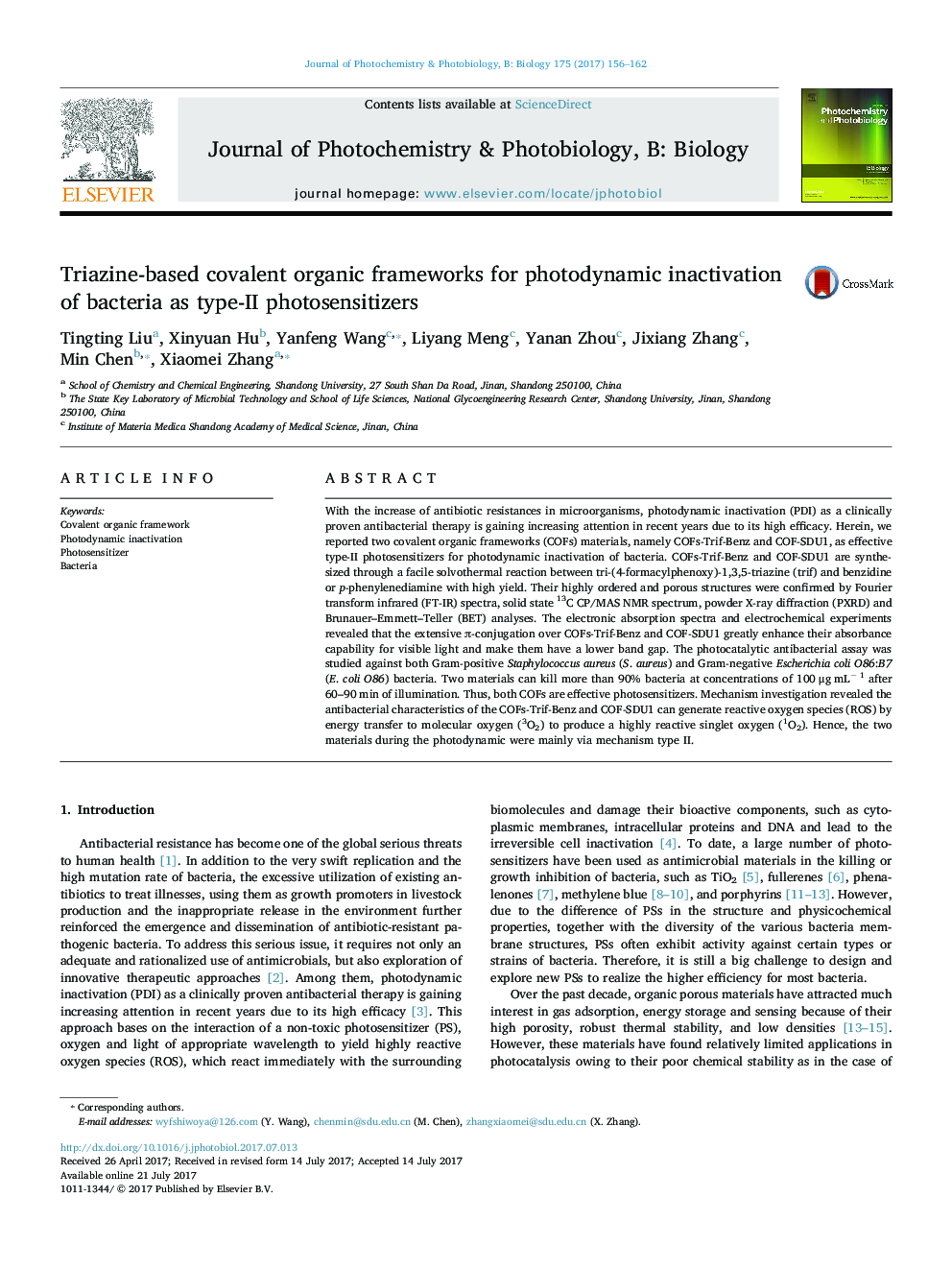| کد مقاله | کد نشریه | سال انتشار | مقاله انگلیسی | نسخه تمام متن |
|---|---|---|---|---|
| 6452529 | 1418058 | 2017 | 7 صفحه PDF | دانلود رایگان |

- Two COFs materials were fabricated to be photosensitizers.
- The material functional property can be ameliorated by modifying the building block.
- Two COFs exhibit good performance in photodynamic inactivation of bacteria.
With the increase of antibiotic resistances in microorganisms, photodynamic inactivation (PDI) as a clinically proven antibacterial therapy is gaining increasing attention in recent years due to its high efficacy. Herein, we reported two covalent organic frameworks (COFs) materials, namely COFs-Trif-Benz and COF-SDU1, as effective type-II photosensitizers for photodynamic inactivation of bacteria. COFs-Trif-Benz and COF-SDU1 are synthesized through a facile solvothermal reaction between tri-(4-formacylphenoxy)-1,3,5-triazine (trif) and benzidine or p-phenylenediamine with high yield. Their highly ordered and porous structures were confirmed by Fourier transform infrared (FT-IR) spectra, solid state 13C CP/MAS NMR spectrum, powder X-ray diffraction (PXRD) and Brunauer-Emmett-Teller (BET) analyses. The electronic absorption spectra and electrochemical experiments revealed that the extensive Ï-conjugation over COFs-Trif-Benz and COF-SDU1 greatly enhance their absorbance capability for visible light and make them have a lower band gap. The photocatalytic antibacterial assay was studied against both Gram-positive Staphylococcus aureus (S. aureus) and Gram-negative Escherichia coli O86:B7 (E. coli O86) bacteria. Two materials can kill more than 90% bacteria at concentrations of 100 μg mLâ 1 after 60-90 min of illumination. Thus, both COFs are effective photosensitizers. Mechanism investigation revealed the antibacterial characteristics of the COFs-Trif-Benz and COF-SDU1 can generate reactive oxygen species (ROS) by energy transfer to molecular oxygen (3O2) to produce a highly reactive singlet oxygen (1O2). Hence, the two materials during the photodynamic were mainly via mechanism type II.
Graphical Abstract211
Journal: Journal of Photochemistry and Photobiology B: Biology - Volume 175, October 2017, Pages 156-162